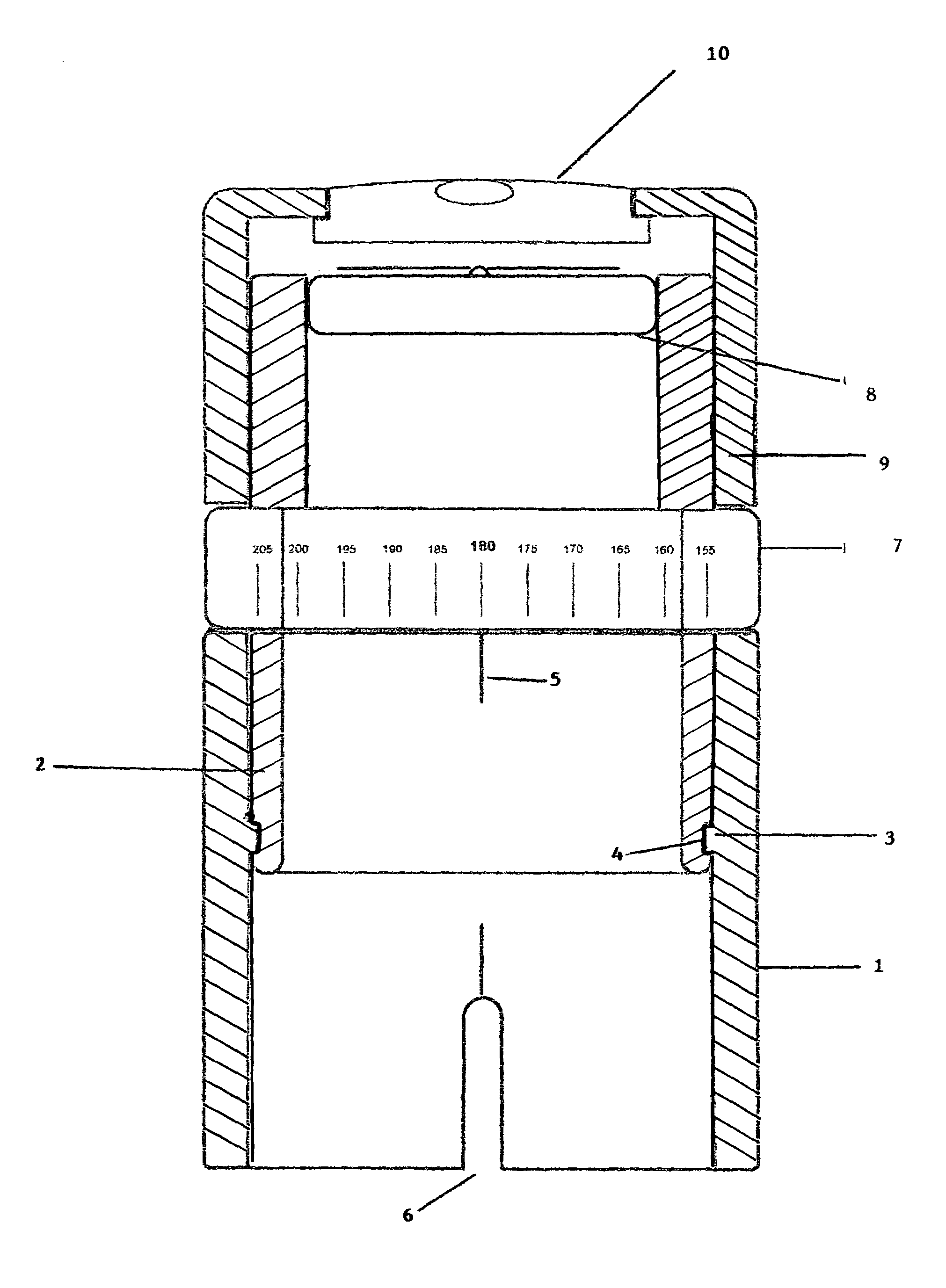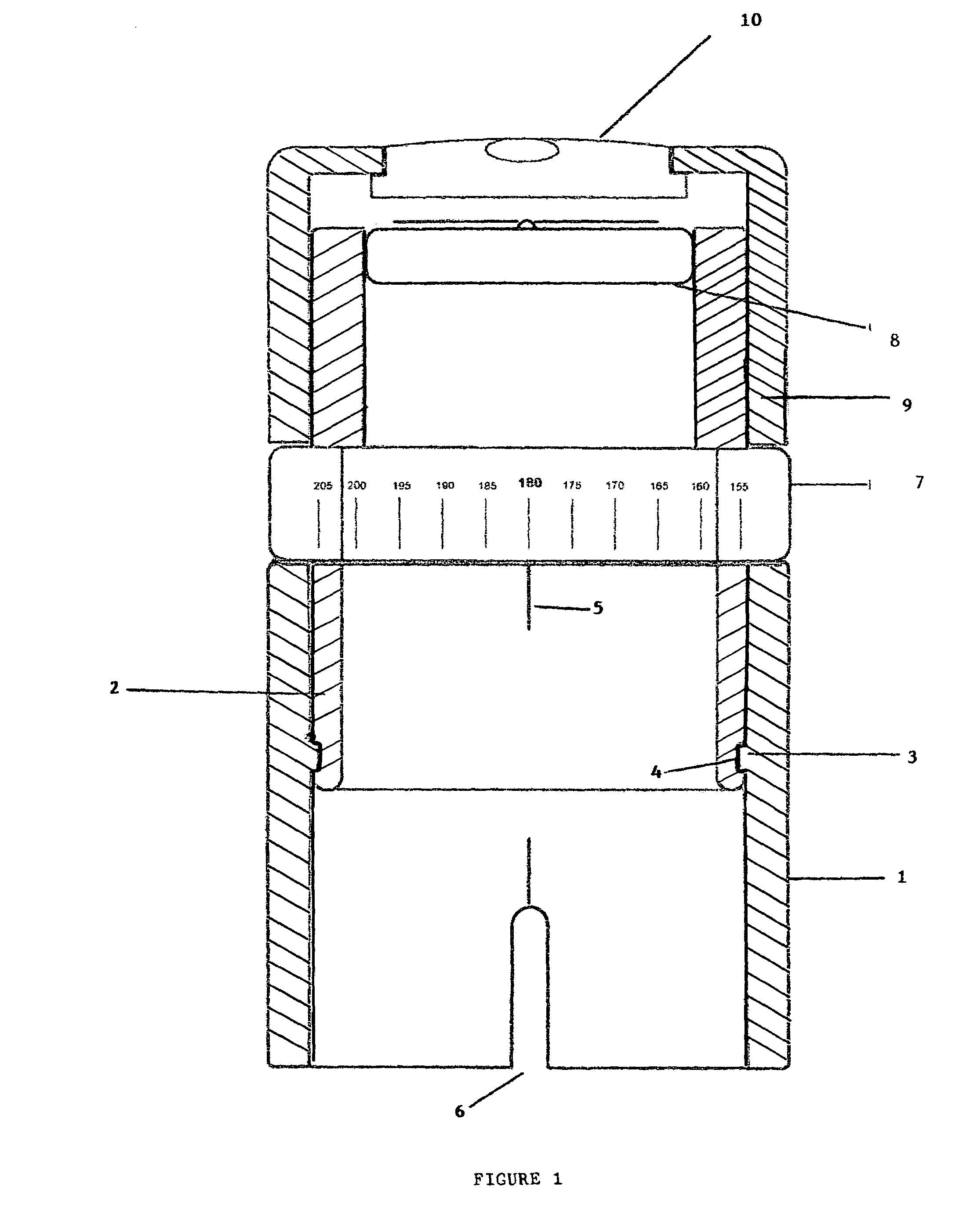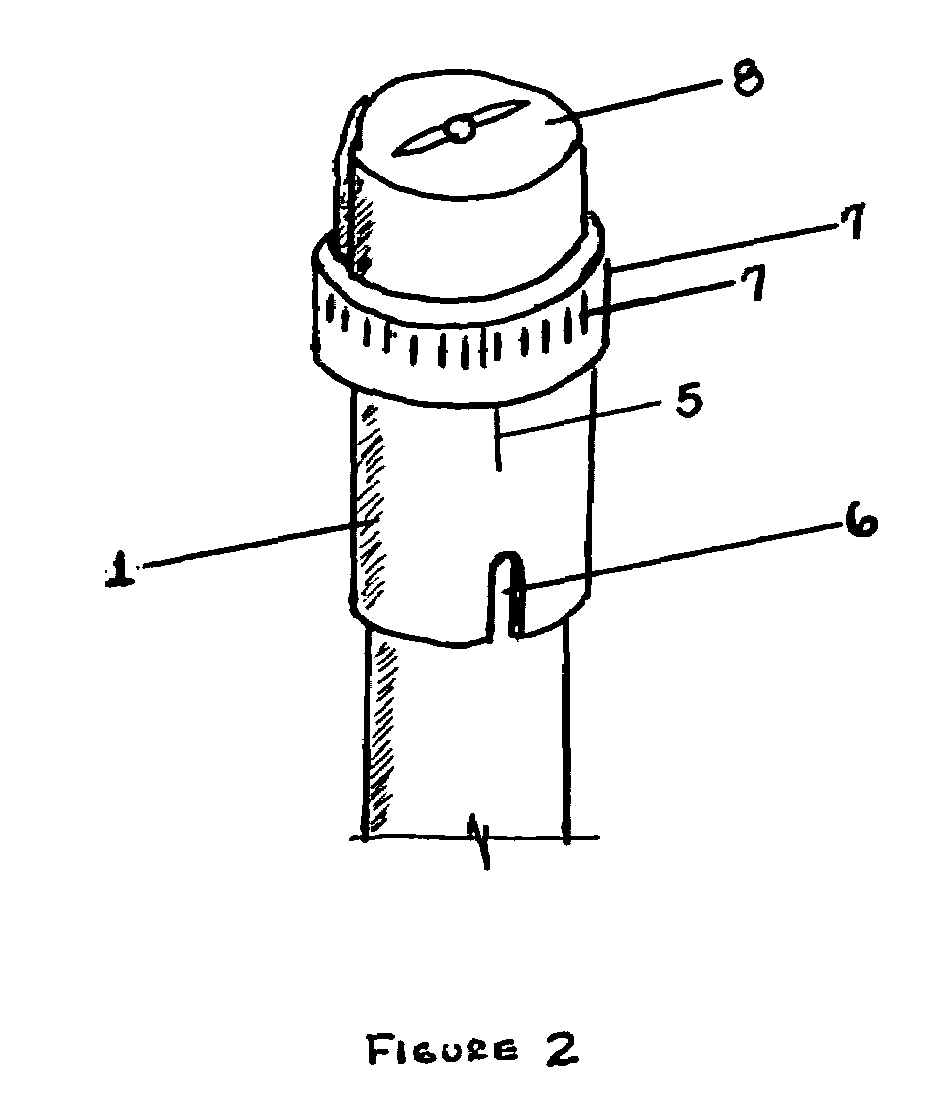Satellite antenna alignment device and method
a technology for satellite antennas and alignment devices, which is applied in the direction of mechanical measuring arrangements, instruments, and using mechanical means, etc., can solve the problems of inconvenient installation, cumbersome process, and inconvenient installation
- Summary
- Abstract
- Description
- Claims
- Application Information
AI Technical Summary
Benefits of technology
Problems solved by technology
Method used
Image
Examples
embodiment
Preferred Embodiment
[0043]In the preferred embodiment of this invention, the satellite antenna installer would contact the manufacturer of the satellite antenna dish and / or the operator of the satellite broadcasting or rebroadcasting the desired satellite television, radio, or Internet signal(s) to obtain the optimal azimuth and elevation settings for the geographic location of the site of the intended installation. The installer would then rotate cylindrical insert 2 with respect to cylindrical sleeve 1 until the value of the optimal azimuth setting on azimuth indicator ring 7 is exactly aligned with azimuth indicator mark 5. Since cylindrical insert 2 fits tightly inside cylindrical sleeve 1, there is little or no chance of inadvertent movement. Nonetheless, other embodiments of this invention contemplate methods of locking the position of cylindrical insert 2 with respect to cylindrical sleeve 1.
[0044]After positioning cylindrical insert 2 and cylindrical sleeve 1 with the optima...
PUM
 Login to View More
Login to View More Abstract
Description
Claims
Application Information
 Login to View More
Login to View More - R&D
- Intellectual Property
- Life Sciences
- Materials
- Tech Scout
- Unparalleled Data Quality
- Higher Quality Content
- 60% Fewer Hallucinations
Browse by: Latest US Patents, China's latest patents, Technical Efficacy Thesaurus, Application Domain, Technology Topic, Popular Technical Reports.
© 2025 PatSnap. All rights reserved.Legal|Privacy policy|Modern Slavery Act Transparency Statement|Sitemap|About US| Contact US: help@patsnap.com



